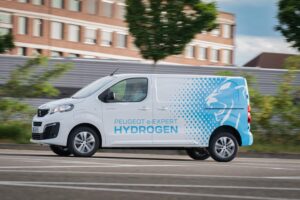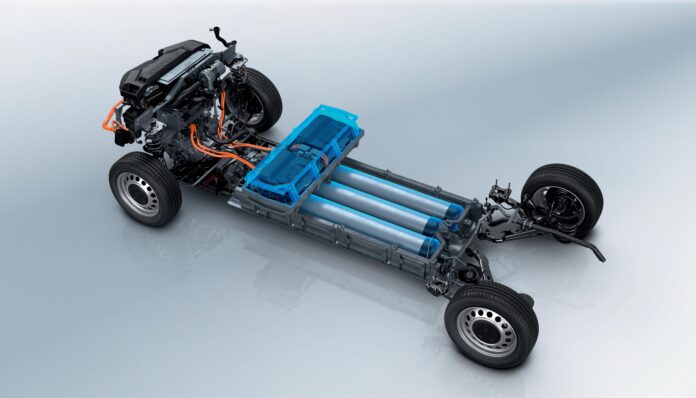The University can prove to be a hotbed able to make whole sectors evolve. It is always precious to underline the school’s key role, especially concerning STEM subjects that have the entire potential to improve the world. An excellent example is represented by Jacopo Ferretti, fresh graduate in Electric Drive Engineer during his master of Electric Vehicle Engineering at University of MUNER who has developed some cool University projects with the target of innovating in the ambit of electric motors.
«I was asked to analytically design two electric motors using Matlab, and to validate them using Finite Element Analysis, with FEMM». The motors under investigation were 28kW Induction Motor and 55kW Surface Permanent Magnet Motor.
«The main difficulty during this project was to use and to understand all the equation seen during the course. I have to admit that I spent a lot of time troubleshooting and understanding why my outputs were not so great! At least, it was a great experience and I have learned a lot of new things regarding EM that were unclear for me».
Recently, on Linkedin, the neo-engineer has made available his reports Induction and SPM motor design, Citycar comfort evaluation, comparing suspension in case of traditional and In-wheel powertrain, and Electromagnetic Compatibility,
Cues and inspirations by Muner University
The new generation of electric vans by Peugeot uses hydrogen
Among the first that have proposed a commercial electric van powered by hydrogen fuel cells as standard, Peugeot is more and more raising the bar. And it does it with the new e-Expert Hydrogen, compact van equipped with a next-generation technology called “Next gen e-Van Hydrogen efficiency”, enabling it to travel over 400 km at zero emissions, being recharged in less than 3 minutes.
Based on the EMP2 (Efficient Modular Platform) multi-energy platform, the PEUGEOT e-EXPERT Hydrogen is an all-electric vehicle, combining two on-board sources of electrical energy, thanks to STELLANTIS’ innovative “mid-power plug-in hydrogen fuel cell electric” system: the system combines a battery that can be recharged from the mains with the fuel cell powered by hydrogen contained in the canisters under the vehicle floor. The PEUGEOT e-EXPERT Hydrogen benefits from all the advantages of hydrogen, battery technology and electric traction.
 Actually, it is the hydrogen version of its electric van with fuel cell technology by Stellantis.
Actually, it is the hydrogen version of its electric van with fuel cell technology by Stellantis.
The hydrogen-powered fuel cell is combined with a rechargeable lithium-ion battery with 10.5 kWh capacity and 90 kW power. Positioned under seats, the battery also supplies the electric motor during some driving phases.
An onboard 11-kW three-phase battery charger is used for the power supply. These two energy sources work in synergy to power a permanent-magnet electric motor, with 100 KW (136 HP) power that delivers 260-Nm torque.
Positioned on the front axle, this electric traction chain resembles the one of Peugeot e-Expert (electric battery model). The van features the same load volume characteristics as battery electric and diesel versions: up to 6.1mü of cargo volume, 1100 kg of payload, 1000 kg of towing capacity. The high-voltage battery is guaranteed for 8 years or 160,000 km, by at least 70% of its efficiency.
Speed record for an Australian electric motor
The professor Rukmi Dutta and her team of the University of New South Wales, in Australia, have developed a new electric motor that works at high speed and uses less energy, which definitively means less pollution.
Rukmi has innovated and improved the existing IPMSM, which have different characteristics that make them highly performing electric motors, decreasing their environmental impact.
The integration of magnets inside the rotor generates more torque: the cylinder turns not only owing to the interaction between magnet and alternate current, but also because of the additional rotation caused by the rotor material’s resistance to the magnetic field, a property called “magnetic reluctance”. These machines can also operate at high speed without needing much power, which means that the smallest IPMSM can perform the same quantity of work as other bigger motor types. Besides, compactness is a key factor for the use in cars and aircrafts, where space and weight capacity are limited. The developed motor, not longer than a pen and with the diameter not bigger than a coffee cup, can reach 100,000 rpm and the nominal power is 5 kilowatts.
Turin, a new R&D Centre for electric and electronic components
MTA, multinational that operates in the global automotive sector through the two Electric and Electronic divisions, has announced the establishment of a new Research & Development Centre in Turin, in Mirafiori area, automotive excellence pole. The new centre, already in operation, will employ at steady-state about 25 engineers dedicated to the development of electric and electronic components, with a particular focus on products such as OBC (On Board Charger) and DC/DC converters intended for hybrid and electric vehicles, automotive, truck and heavy-duty applications. The new centre will host also a laboratory with test benches and forefront equipment to allow the autonomous execution of tests on power electronics components developed here.
“We intend, as it already happens with Milan Polytechnics, to establish a relationship of fruitful know-how exchange with Turin Polytechnics, an excellence for the whole automotive world. Therefore, the centre will allow us to support vehicle manufacturers even better, with an increasingly articulated and technologically advanced offer for new-mobility requirements”, stated Antonio Falchetti, Executive Director of MTA.
Opportunity for women in the auto-rickshaw industry
As part of the Moving Boundaries 2 campaign, Mowo Social Initiatives Foundation has set out to train 500 women across Karnataka, Madhya Pradesh, Telangana, Maharashtra, and Delhi in electric auto driving. This transformative initiative, which kicked off on March 8th, 2024 aims to empower women by providing them with skills and opportunities needed to thrive in the electric auto-rickshaw industry. The team comprises an 8-member all-women crew steering an array of electric vehicles –auto-rickshaw, bike, and cargo van, set to cover 3,333 km over 30 days.
«Our inspiring team of 5 women auto-rickshaw drivers consists of Naseem, Bhavani, Prabha, Reena, and Saritha. These trailblazers are driving ETO Motors electric auto-rickshaws in a relay format, setting an example and inspiring countless others to join the movement towards electric vehicle livelihoods» explains Tamanna Chaudhary di Mowo. Partnering with ETO Motors, an electric three-wheeler company, Mowo is dedicated to providing comprehensive training and support to participants. The vehicle is the BDY T3 electric van.
E-motors tested in a simulated atmosphere equivalent to 43,000 feet of altitude
Wright Electric Inc., the producer of advanced motor, generator, and inverter technologies, announced that they successfully tested their motor in the Wright Lab at a simulated atmosphere equivalent to 43,000 feet of altitude without Potential Discharge (PD).
Conducted at 1,000 volts, this test sets the stage for simulated altitude testing at the Nasa Neat facility later this year. PD-free performance is crucial to operating electric motors on aircraft. When electric motors run at high voltages, the insulation surrounding the conductive components is subjected to electric stress. Over time, this stress may weaken the insulation, leading to PD. It can further accelerate the degradation of insulation, potentially causing motor failure, among other safety concerns.
As altitude increases, the voltage level needed to cause PD decreases. Because of this, PD is not an issue for many electric aircraft under development, such as air taxis, which cruise around 3,000 feet where typical insulation is sufficient. Wright Electric is developing motors and inverters for commercial aircraft that typically cruise at 36,000 feet, making air taxi solutions impractical. Jeff Engler, Founder and CEO of Wright Electric, explained, «45% of all aviation emissions are from single-aisle flights. By proving those flights can be flown without potential discharge, we are one step closer to eliminating this massive form of pollution.»
Cell testing: Unico presents a new innovative solution
The new BAT300 series by Unico was presented recently in the USA during an international seminar about batteries. It promises to establish a new standard in testing cells. The BAT300 series, designed for test applications that value economy and flexibility over ultra-high accuracy, is based on the IDAC Unico power platform and offers other performance, efficiency, and versatility at a reduced cost. The last offer by Unico is an all-in-one compact solution (from 480 V CA to CC) that reduces to the minimum the energy consumption and maximizes test efficiency.
Steve Bright, the CEO of Unico, affirmed: «with the recent acquisition of Present Power Systems, we’re already leveraging the technologies of our new Advanced Technology Group, and the BAT300 series represents our first product to come out of the acquisition». He continues by adding that «the new IDAC Power Platform enables Unico to strengthen our presence in the battery markets and venture into new areas such as onboard charging, home charging, battery recycling, and more».
The BAT300 series is ideal for cell creation inside gigafactories, aging and functionality testing in R&D laboratories, and end-of-life (EOL) activities in cell/module production lines.
Highlights of microwave Hvac system for electric vehicles
A team of researchers of the University of Birmingham is working at the e-Thermal bank, a thermo-chemical system based on microwaves for the climate control of electric vehicles that might extend by even 70% the vehicle’s range.
The system operates as a secondary energy source inside the vehicle, discharging Hvac tasks from the battery and so increasing the autonomy. It acts by coupling a chemical heat pump with the energy of microwaves, supplying heating or conditioning to the cabin on demand, with a higher energy density than battery packs. The microwave energy dissociates a working pair of solid vapour and condenses the vapour into liquid. This charge process stores energy inside the car, inside the e-Thermal bank.
According to researchers, the thermochemical system has a high density of 1600Wh/Kg. On the contrary, the record density for lithium-ion batteries is around 700 Wh/Kg.
“The heating and the cooling of the electric vehicle’s passenger compartment need a notable energy and contribute more significantly in the reduction of the electric vehicle’s range”, affirmed professor Yongliang Li, research manager and holder of the chair of Thermal Energy Engineering at the School of Chemical Engineering in Birmingham.
“We expect that, replacing the conventional Hvac and possibly a small part of the battery pack, e-Thermal banks would provide an efficient control of the cabin’s temperature and a range extension up to 70%, at a lower cost compared to the increase of the battery’s capacity”.
By Korean researchers a study about the efficiency of lithium-ion batteries
The researchers at Chung-Ang University in South Korea have discovered that high-concentration electrolytes can improve the efficiency of lithium-ion batteries, making electric vehicles greener.
Researchers have focused on the electrolytic solutions used in batteries and have studied the impact of high-concentration electrolytes on their performances, discovering that these electrolytes improve quick charge skills and prevent problems like cell swelling caused by the lithium coating. Researchers think that their discoveries will encourage the widespread adoption of electric vehicles and will contribute to decreasing carbon emissions.
The study has analyzed the use of some electrolytes, like those based on linear carbonate with concentrated LiPF6, to improve the performances of lithium-ion batteries.
Mazda enhances R&D for its rotary engine
Mazda has announced they will speed up their research and development activity on the rotary engine (RE), already used in the MX-30 R-EV and presented as the powertrain of the concept Iconic SP shown to use on future electrified models.
The new “RE Development Group” will take care of going on making its rotary engine evolve, equipping it with ideal sizes to be used as a generator in electrified models, carrying out research and development activities in areas such as conformity with regulations in primary markets and the use of zero-emission fuels.
Speaking of the new team, Ichiro Hirose – Director, Senior Managing Executive Officer, and Chief Technology Officer (CTO) – declared: «In the electrification era and a society featuring zero carbon emissions, together with our challenging spirit, we promise we will continue to offer appealing cars that thrill customers».
Recently, for the first time Mazda restarted the production of cars with rotary engines, eleven years after the exit from the scene in 2012 of the Mazda RX-8, equipping the MX-30 with a motor-generator unit that is the core of its first mass-produced PHEV system. Released in Japan and Europe, the Mazda MX-30 e-Skyactiv R-EV is the twelfth Mazda model with a rotary engine.










